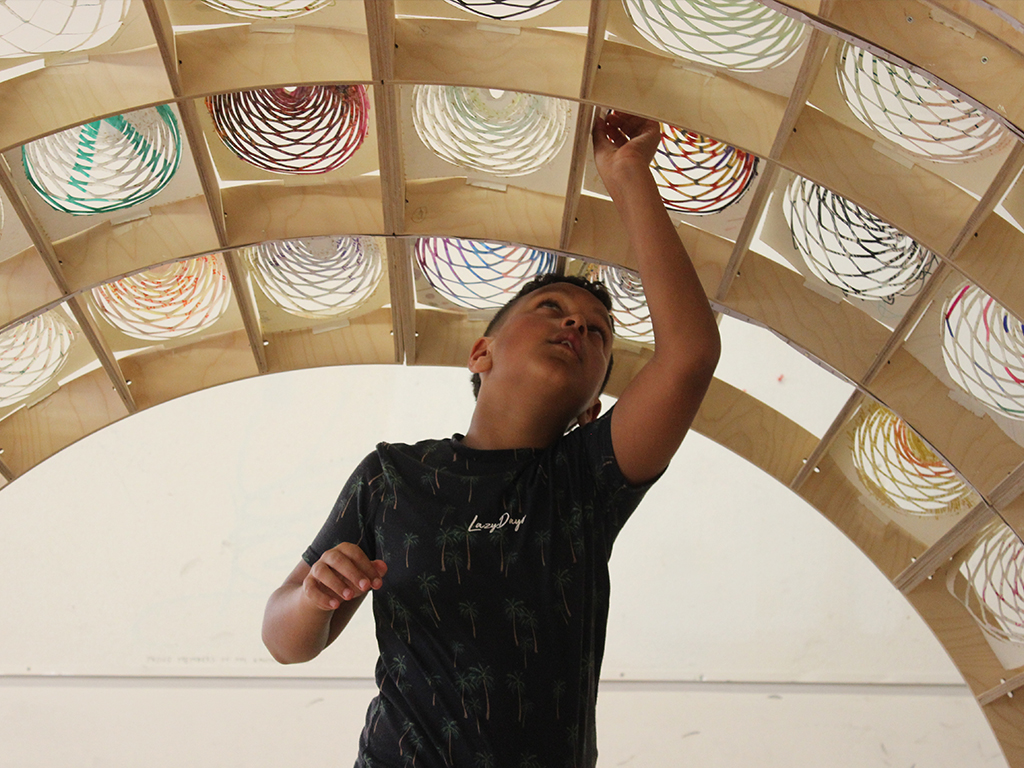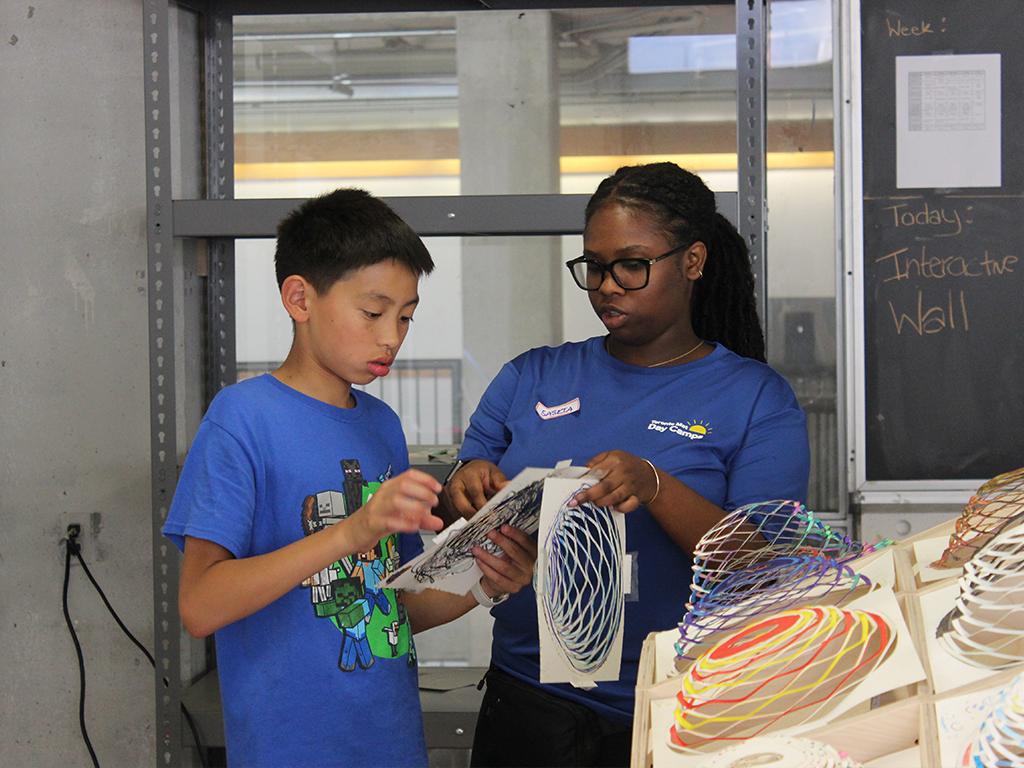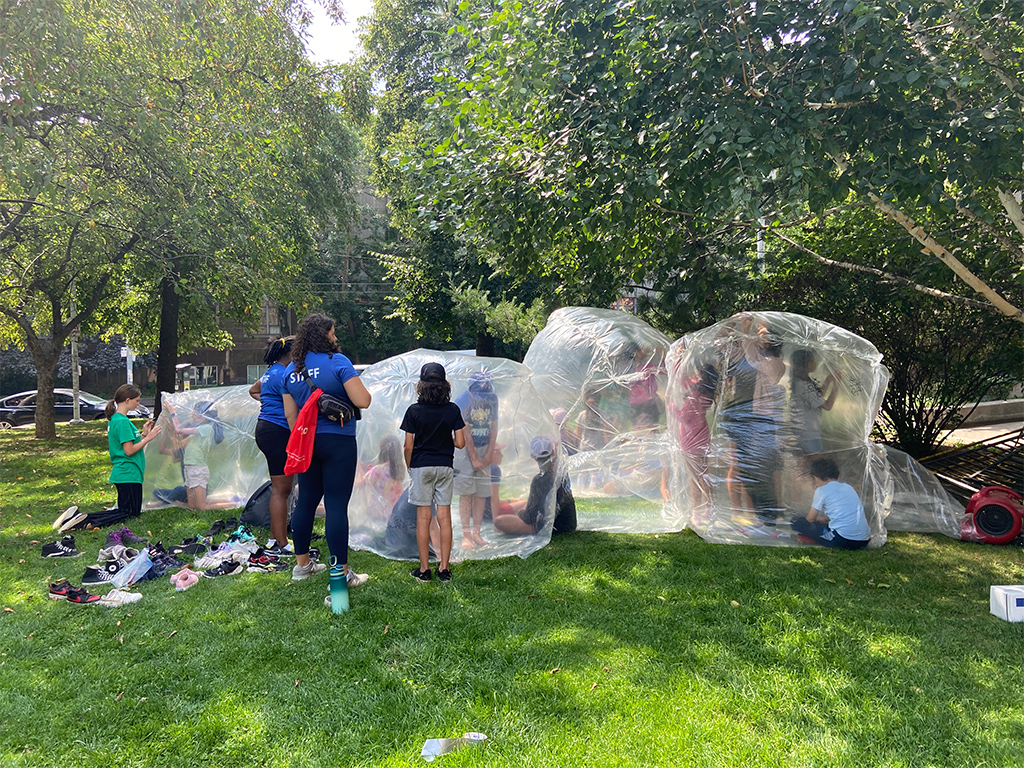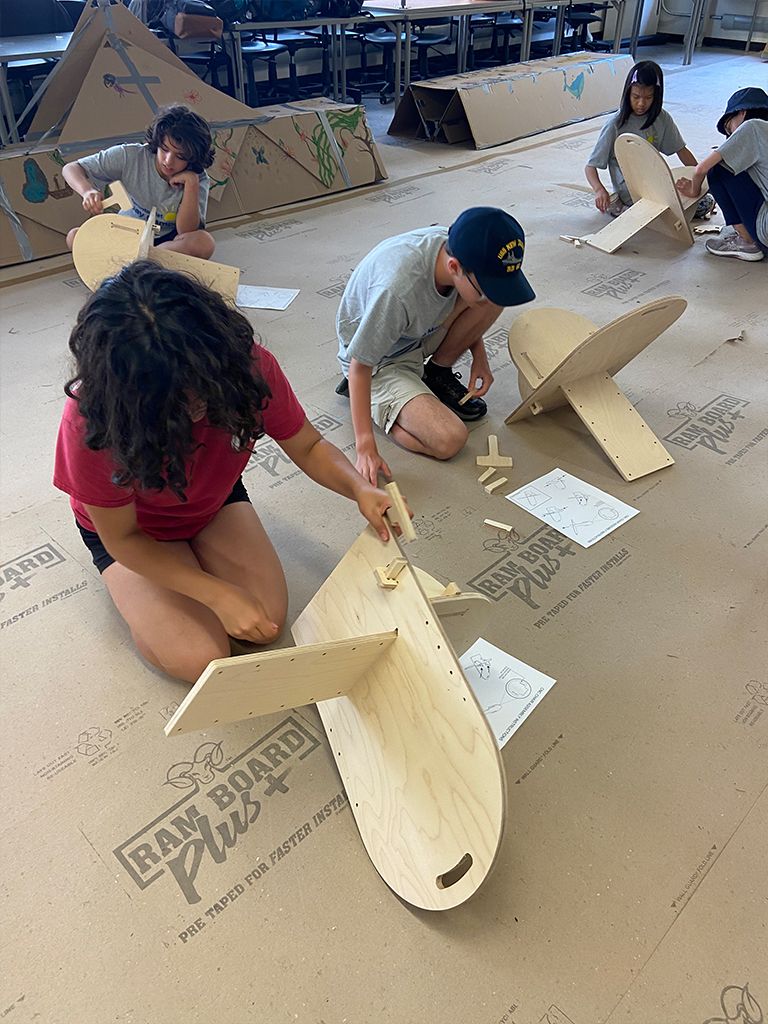Fostering Tomorrow's Architects: DAS Students on Running The 2023 Summer Youth Camp

The Department of Architectural Science partnered with the Department of Athletics & Recreation to host a summer Architecture and Digital Creativity Camp for ages 9-14 developed by professor Vincent Hui. Third year undergraduate students Saskia Scarce and Emily Lensin delve into how working at the summer camp was a rewarding experience both in terms of developing their own skills as fabricators, as well as giving back to the larger community and inspiring the next generation of designers.
The camp has several different programs which introduce campers to structural principles, digital fabrication and design.
Saskia: Designing the interactive wall gave us hands-on experience similar to design builds we would make for our program. We designed and built the shell, and campers would contribute components.
Emily: Building a program around how children can implement themselves in the designs was one of our biggest tasks.
Saskia: Yes, and to touch on the process of building - the interactive wall was the first time I became comfortable using the laser cutter and the CNC router - it was the first time model making for me.
Emily: And the campers learned the tectonics of how things join together, which is only learned through hands-on experience. In the regular pedagogy of the classroom, I tend to leave my models until the last minute, so this is the first time I went through iterations and hands-on modeling. I feel more comfortable asking questions in the shop now! For the camp, the shop was at our disposal, so getting that hands-on experience was great - being able to see mistakes before you’d actually make them by making scaled models of our projects. In order to understand the tectonics of each piece, how each piece would be implemented together, we’d make smaller versions until we were given the go ahead to build a larger model.
Saskia: Building the structure was one thing - it’s a lot of physical labour! But then we had to figure out the units (the parts the kids would design); we were trying to figure out the amount of agency we would give kids. It’s also an opportunity for us to take advantage of tools in the shop, like the laser cutters. It was interesting to see the kids interact with the units we made. They learned how to follow directions.
Emily: What we designed gave them flexibility. It was one colour (white) made out of bristol board and they could use sharpies and markers. In a way they elevated the parameters we gave them with their designs and their ideas.
Saskia: These units created different forms when extruded - so it would always be something interesting or provocative. So that’s the interactive shell project!

Emily: Just one of the many things we did.
Saskia: Emily did a lot of supervision, whether it was CNCing chairs they would assemble or the book nooks. Let’s say we have a stack of books, you can take a 3D house that acts like a townhouse and you can shove it in between books, and then take it home when you’re done. Kids get to learn the basics of a section, elevation, plans. They had to assemble it and decorate it and it lights up!
Emily: They really enjoyed the book nook. That was one of the designs we were able to implement more of the architecture curriculum into - more similar to what we do in the university. So there were six weeks in total. We had 3 different programs, we dedicated two weeks to each program. Each program ran a week so we would have to double the program.
Saskia: The interesting part of ‘Home Sweet Home’ week was building an inflatable house out of vapour barrier for these kids to play in. We gave them a template on how to cut plastic, we gave them tape. Everyone worked together (they had to assemble this properly) and we would go out during prep time and fill it up with air.
Emily: They would have a hub, and then a tunnel. They were able to travel through from one house to another. For rice krispie beams, the whole concept of concrete beams was replaced with rice krispies: so this represented all the rocks (all the aggregates), and would be combined to resemble all the mixtures you would put in concrete to make the beams. The two different types of cereals were meant to be large and small arrogates, water is the butter, marshmallows was the cement. In concrete beams there’s rebars (metal bars to give it more strength), so we would represent these with twizzlers. We put it into molds to give it shape, and we left it out to “cure” i.e. to harden. We did it at the start of the day, and by the end of the day the kids would use juice boxes to test out how strong they would be.

Saskia: This whole experience has given me a greater appreciation for professors and teaching.
Emily: It’s one thing to teach hands-on activities, it’s another to implement - to mix them together.
Saskia: For Digital Creativity week, we brought kids to our CAD lab.he goal for the week was for them to come up with a character, superhero, object etc. and create a logo.
Emily: We had to make it into a laser cut file, so we could use the shop to laser cut the stencil out. We spray painted them onto the shirts. Each week had a takeaway object.
Saksia: In Adobe Photoshop, they had the opportunity to make a movie poster or comic book. They learned masking, adding the lasso tool, speech bubbles, filters, etc. I was trying to teach them my workflow and they picked up some of it!
Emily: Many students were unsure of how to define architecture, because it isn’t really implemented at the elementary school level. We gave them the opportunity to merge theory and practice. It’s a way to expand their horizons - and to go beyond what they would ordinarily think of as architecture.
Saskia: I've never been to camp before, so to me this is such a wild experience to see what they get to do. Some kids are sponsored by other organizations, such as BAIDA - and we saw the results. When we first met them, they were super enthusiastic - we saw them three weeks out of the six, and one of the students wants to be an architect now. They really wanted to understand what was happening and participate. It was really inspiring.
Emily: Seeing our interactive shell - and other extra curricular design builds - you go from a thought to a tangible object. And once I saw people interacting with it, it warmed my heart. This entire experience wouldn’t have been possible without being in the DAS program. We had a lot of ownership over their projects and were able to provide a tangible experience.
Saskia: Each week we would make portfolios, and watch them make so many new friends. We’d see groups forming and how people broke out of their shell. Meanwhile, Emily and I were singing and dancing every morning! It was great to see them transform into more social versions of themselves and get to be more comfortable. It was great to see the kids looking forward to what they would be doing the next day. I grew up as an immigrant. I don't know if I would have been able to participate in a camp when I was growing up. I didn't know those types of camps were available and I can see how valuable they are.

Emily: I went to a general camp where we never learned this. Getting kids interested in the different techniques and methods that they could implement as architects is amazing: it’s no longer an unknown territory and encourages further exploration.
Saskia: When I came to this program, I knew nothing about architecture. There were people in our program that had wanted to be architects from a young age and I think the camp is planting that seed. Kids would ask questions about what we needed to do to create that interactive shell - so we demystified the process for them. It’s putting the idea in their head that they CAN do this. At the end of it, we had parents who were amazed and kids who wanted to study architecture with us. It was really nice and impactful!
Emily: It’s getting them comfortable with this environment.
Saskia: Immersive some would say! Fighting imposter syndrome has been a big part of my personal journey: it’s the first step. Having confidence in ourselves to build the shell for example. It even empowered us in the process.